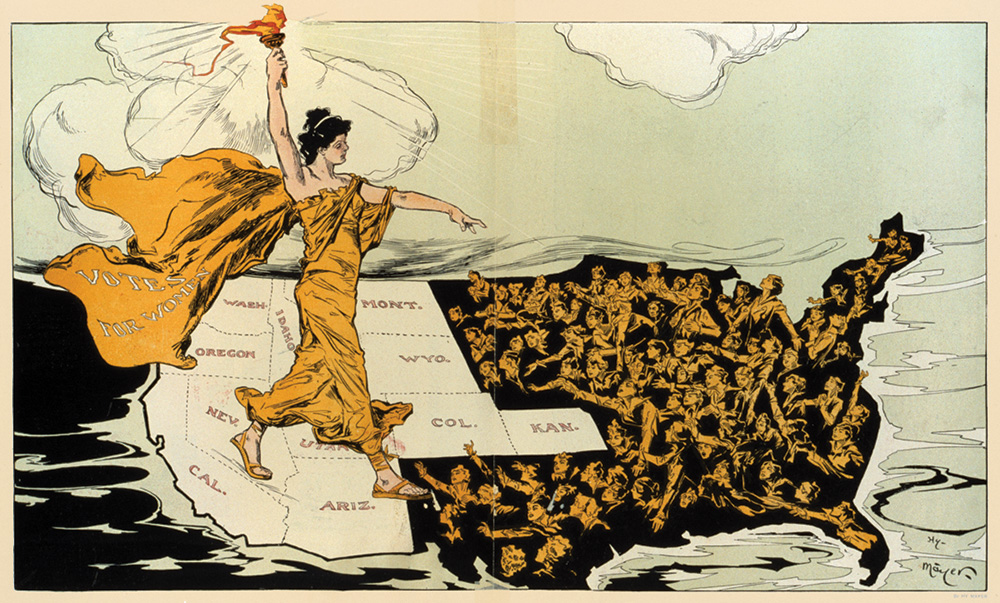Mass Media

Proponents of woman suffrage used the visual arts successfully. This 1915 illustration, entitled The Awakening, shows a torch-bearing female labeled "Votes for Women," symbolizing the awakening of the nation's women to the desire for suffrage, striding across the western states, where women already had the right to vote, toward the east where women are reaching out to her. (Courtesy of Library of Congress) Enlarge Image
Proponents of woman suffrage used the visual arts successfully. This 1915 illustration, entitled The Awakening, shows a torch-bearing female labeled "Votes for Women," symbolizing the awakening of the nation's women to the desire for suffrage, striding across the western states, where women already had the right to vote, toward the east where women are reaching out to her. (Courtesy of Library of Congress) Enlarge Image Congressional voting and state ratification of the 19th Amendment followed one of the most intensive advertising blitzes Americans had ever seen. Early on, suffragists made appeals to men in positions of power and influence, especially publishers, editors, poets, columnists, and journalists. By the turn of the 20th century, more women had access to these means of publication than ever before, especially in western states like Oregon. They used this unprecedented control of media to create dozens of magazines, periodicals, and newspapers highlighting women’s issues and the necessity of woman suffrage. Even suffragists without access to the presses could still write editorials for their local papers, or give speeches and demonstrations to anyone who would listen.
Visual arts served as one of the most wide-reaching tools for suffragists. Artists created posters and paintings in strikingly modern styles, often incorporating the symbolic colors of the suffrage movement. Pageantry was also popular, as were processions of women wearing white and stunning parade floats. Many of these artists and parade marchers projected the image of feminine grace and purity championed by progressive reformers. It was in newspaper comics that the art became vicious, though, as suffragists lampooned anti-suffragists as petty tyrants and the women who stood against gender equality as cowardly sycophants.
Colors of the Cause

The colors of the cause: White, purple, and yellow. (Oregon State Archives Image) T
The colors of the cause: White, purple, and yellow. (Oregon State Archives Image) Three colors, white, purple and yellow, played a prominent role in the iconography of suffrage. They appeared on banners, sashes, pamphlets, and all manner of tricolor badges. White was chosen to represent liberty, purity, and feminine grace. Purple, or violet, represented the vote as well as loyalty, constancy, and steadfastness.
Yellow and gold were by far the most widespread colors of the movement. They emerged in 1867 when Elizabeth Cady Stanton and Susan B. Anthony were in Kansas advocating for a state suffrage referendum. The pair adopted the state flower, the sunflower, as a symbol of the suffrage cause. Suffragists began wearing gold pins and yellow ribbons to advertise their cause. Yellow roses were also popular, and served as floral badges distinguishing suffragists from anti-suffragists, who wore red roses instead.
Next: Coalitions and Related Movements >